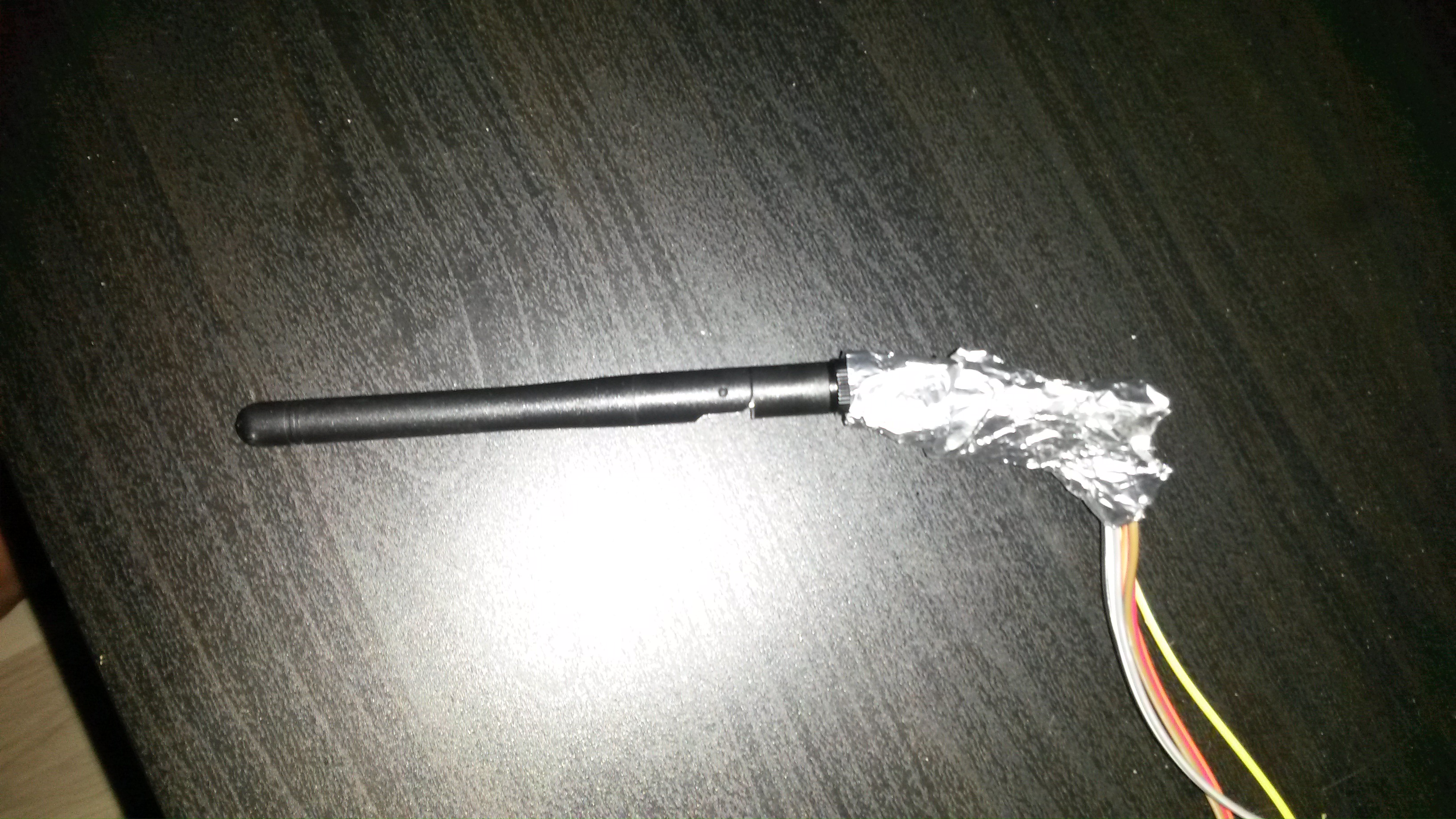[SOLVED] 2 X nrf24l01+pa+lna with RF24_PA_MAX
-
I got problems with using 2 modules nrf24l01+pa+lna with the PA_LEVEL configured to RF24_PA_MAX.
I'm using one module on the gateway with the MySensor Serial Gateway Sketch the other module on a Arduino nano with a sketch that simply sends a fixed value to test the connection.Both modules are directly powered by 2xAA batteries buffered by 220µF capicitors.
The strange thing i experience is: They don't communicate to each other, only if i put my hand arround one of the antenna the packets starts to flow.
Increasing the distance between both modules don't work.Anyone has an idea what could be wrong?
Solved with: http://blog.blackoise.de/2016/02/fixing-your-cheap-nrf24l01-palna-module/
-
I would guess that you are using the stubby linear antennas, with both antennas parallel to each other and at right angles to the line between the units. Like both antennas pointed up, with the units at some horizontal distance from each other. (The antennas will radiate/receive best at right angles to where they are pointing, and least along the line of where they are pointing - both directions - so pointing the antennas at each other is not good.)
Have you tried reducing the power level?
Do you have any regular models without PA+LNA+external antenna? You might try interoperating with them, for another data point.
RF is weird sometimes.
-
@Zeph your guess is correct, i should have written that.
Yes i tried to reduce the power level, they work on a low-high power level up to 400-600m free sight distance.
But because i wanted to get out the greatest distance, it would be nice to get them up to the max level.The strange thing is that holding my hand arround one of the antennas get the packets flowing.
In my understanding holding my hand around the antenna should normaly shield the RF.. instead it just works o_O. -
I've been having reception problems myself (so I'm planning on switching to RMF69W modules) and have been reading more about antenna design since I want to create a custom PCB (and basically learning that I'll probably never know enough to be good at RF). You might be having ground plane issues - it can also help to try moving the radio module away from any other boards and metal surfaces near it and see if that helps too.
-
Well... i never opened one of these standard 2,4ghz stubby antennas but i guess there is a little groundplane in there on the bottom of the antenna directly after the joint.
It isn't that i got directly reception problems... 400-600m sounds good in my opinion. But working with the maximum i can get, would be nice...Little bit offtopic: Whats the maximum distance the RMF69W working on? Whats the datarate they deliver? I know that the RFM69W modules work on 868mhz so they naturally should work on a longer distance, but most 868mhz chips don't even reach the minimum datarate of 250kbps...
-
External 2xAA batteries for my tests. In the final use case I will add a 3.3V voltage regulator. I got a tip yesterday that this could be a matter of inproper shielding to the module itself. Sounds like a plausible explanation to me. I will try today to shield the module from his own rf with tin foil.
-
Wow. A little better!
I assume that's at 250 Kbps? Did you do any range tests at different speeds?
The nRF24L01+ with LNA & PA & antenna is not that much more expensive than the rfm69* so for some applications that need the higher speed they are still in the running even with longer distances.
I saw an analsyis (maybe here?) which suggested that this setup would not do very much good for reception, which was more limited by the noise floor, such that the antenna gain and LNA would not improve things much - so most of the range gain would come from the increased transmit power (including antenna gain). This was a theoretic analysis, not an empircal test.
If true, it would mean that using an enhanced power unit on one end of the link only would not give one much additional range in bidirectional protocols, where the back-link (conventional to enhanced) would be the limiting factor. I've been curious if this is indeed the case or not in practice.
-
@Zeph Only tried 250kbps at the moment, i tried to test the maximum range possible.
But i will also do some 1mbit and 2 mbit tests in the near future (depends on weather).Hm.. i don't know what exactly do the performance gain. I also ordered some modules with external antenna but without external LNA+PA. Let's see what the LNA+PA really do. ;)
@Fabien: I will post a photo tomorrow. But basicly i just wraped cling film arround the module (to not get any shorts) and then wraped tin foil arround that.
-
-
@Oitzu questions: on the picture, the foil cover up the base of the antenna. Can it touch the antenna connector itself (golden part the antenna is screw on) or this part also need to be covered with plastic film ?
You also told you will try to cover up the inside of the case with foil to not wrap the radio itself... did you try it ?
-
@wico2002: you should also cover the base of the antenna with plastic foil.
As far as i know the base is grounded. I don't really know if this makes any difference but i let my tinfoil ungrounded. I'm no expert in RF mechanics. :DNo not tried this yet.. but this should have the same effect as the tinfoil wrapping.
As long as you let stick the antenna out of the housing.... ;)

